Ah, San Diego, America’s Finest City, the Birthplace of California (not really), the Plymouth Rock of the West Coast; a city ruled by the Kumeyaay, Spain, Mexico, the California Republic, and, finally, the United States of America. San Diego history goes back a long time. Humans have inhabited the area now known as San Diego for thousands of years, and their impact can still be felt today.

Passing through all that time can be overwhelming, especially in such a large and complex modern city. Never fear, dear reader: Below is a brief outline of San Diego history, with suggestions on where and to learn and experience more.
As a note: Just because this guide focuses on San Diego history, it does not make it boring. Each suggested location lies nestled among plenty of restaurants, bars, breweries, scenic places, shopping areas, and theatres. There really is something for everyone, and these options can best serve as anchor points for more in-depth adventures.
Native American Period
The Kumeyaay tribe, the first native Californians, has lived in the San Diego area for over 12000 years. This tribe controlled most of the San Diego area then, having displaced the Luiseno or La Jolla people around 1000 CE, thousands of years before the arrival of the Spaniards.
Many of their villages became bases for modern developments, including Old Town San Diego, National City, and Chula Vista, among many others. They lived off game, fish, and shellfish in the area, and built a culture that persists in parts of the county to the present day. Examples of their pottery, weaving and village life exist in numerous museums.

Where to go:
- San Dieguito Museum in Leucadia
- Kumeyaay Ipai Interpretive Center in Poway
- Museum of Us in Balboa Park
Spanish Arrival
Spanish explorers first sighted San Diego Bay in September 1542, sailing under the command of Juan Rodgriguez Cabrillo. He named it San Miguel Bay, on whose feast day he approached, before continuing up the California Coast, charting and naming various places. With California so far from Spain, however, his findings received little attention.
Sebastian Vizcaino, a Spanish merchant and explorer, visited the area in 1602 and performed the first Catholic services on. Interestingly, he renamed the bay San Diego under explicit orders not to do so. He adored the area, but, as with Cabrillo, Spain had no interest in settling the region, instead continuing to focus on Baja California.

Where to go:
The Age of the Friars
Finally, due to increasing competition with Russia, France, and England in the New World, Spain decided to solidify its claim in Alta California. Gaspar Portola, in 1769, founded a presidio (fortress) on the hill above Old Town, and Friar Junipero Serra followed with the Mission San Diego de Alcala nearby in July of that year. This marks the official founding of the City of San Diego.

The Dominican Friars later moved the Mission to its current location on the San Diego River to separate them from the soldiers, whom the native Kumeyaay distrusted. They built the Old Mission Dam to control irrigation in Mission Valley and trained the natives in modern agriculture and Christianity. Although largely friendly, with thousands of converts known as neophytes, some Kumeyaay resented the intrusion on their lands, and difficulties continued between the two groups.
San Diego remained a backwater and these years passed relatively quietly. The mission and presidio populations continued to grow, as did agricultural output, and Father Serra founded eight others up the coast.
Where to go:
- Mission San Diego de Alcala
- Mission San Luis Rey
- Father Serra Museum and Presidio Hill Park
- The Old Mission Dam/Mission Trails

Old Town & the Mexican Period
Mexico gained independence in 1821 following its First Revolution, and Alta California became a province thereof. The new government secularized the Missions, transferring their lands either to large ranchos of important Mexican families or to Native American territories.
Soldiers’ families and Mexican settlers had built homes and gardens on the flat space below Presidio Hill, and soon numbered enough citizens to become an official Pueblo (town) of Mexico in 1835 – now known as Old Town San Diego. It maintained a distinctly Mexican flavor that remains throughout the neighborhood today. History remembers this as the joyful era of the Silver Dons, wealthy landowners who controlled the area, and Richard Henry Dana, Jr., immortalized the time in his novel “Two Years Before the Mast.”
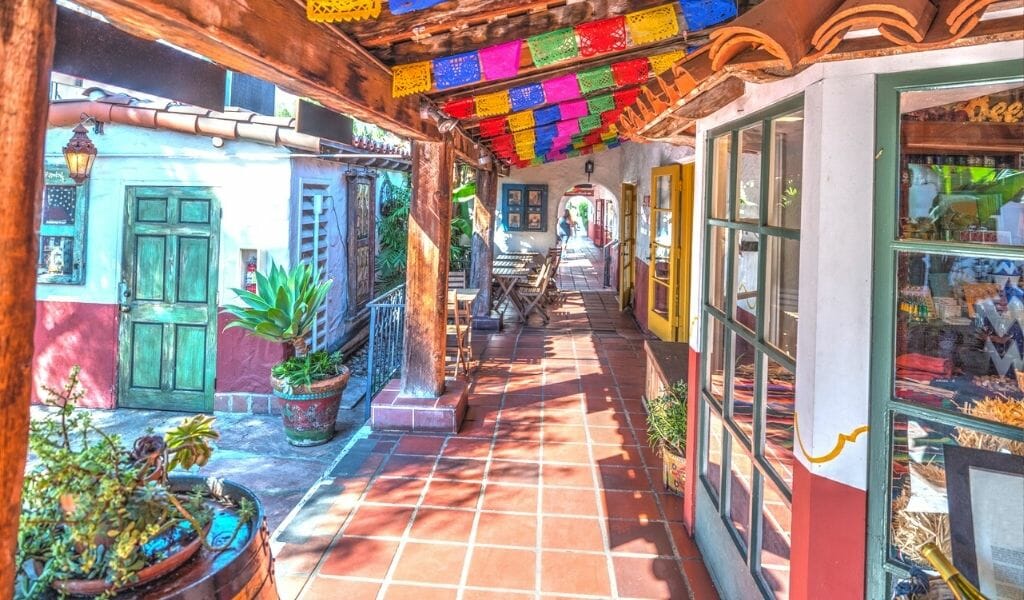
Unfortunately, as goods had to travel overland five miles to La Playa for transport, the town would never grow very large. In fact, it almost immediately began to decline, losing its pueblo status by 1838. Compounded with more consistent attacks from the Kumeyaay—including a lengthy siege that nearly destroyed the town—some considered abandoning the area entirely.
Where to go:
- Old Town National Park, cemetery, and surrounding neighborhood
- Whaley House Museum
- Old Town Ghost Tours

San Diego Becomes an American Frontier Town
Things changed in 1846 with the Mexican-American War and the conquering of San Diego by the Americans. Just prior to the war’s end in 1847, America suffered its only defeat at the Battle of San Pasqual, located outside Escondido, where Kit Carson played a major role in their retreat.
After achieving peace, San Diego settled into the role of a western frontier town, even becoming a trading post for prospectors heading for the gold mines opening in nearby Julian and Banner. Investors noted the promise of the place—in particular, its perfect climate—and the town continued to grow through the years. It maintained a distinctly Mexican flavor that remains throughout the neighborhood.
Where to go:
New Town San Diego
Few can imagine a worse place to construct a city than Old Town San Diego: On a rocky bluff with limited space and very little access to fresh water, the Spanish chose the location solely for protective purposes. In 1850, William Heath Davis spent a small fortune creating the first New Town San Diego, on the shores of San Diego Bay. The entire area shortly entered an economic depression and the effort collapsed, to forever be known as Davis’s Folly.

Father Horton
Enter Alonzo Horton, called Father Horton in his later years. He, like Davis, saw nothing but opportunity in San Diego, and fell in love with the setting. In 1867, he purchased a much larger acreage from the city leaders and laid out what became Horton’s addition on the Bay. The city center became 5th Avenue and Broadway, where the present Horton Plaza and U.S. Grant hotel sit today. This also marked the formal creation of the City Park, later developed into Balboa Park, although it remained untouched wilderness in those days.
Horton proved indefatigable in promoting his New Town, eventually leading it to surpass Old Town, which slowly migrated down the hill. During the late 19th Century, the city continued to expand in all directions, with further additions, subdivisions, and entire towns increasing the overall population.
City leaders worked long hours to entice businesses, industries, and settlers to the city, and they came in droves. The city began to acquire a more international flavor, with numerous ethnic neighborhoods established at this time. Wyatt Earp also settled in San Diego, owning establishments in the Gaslamp District.
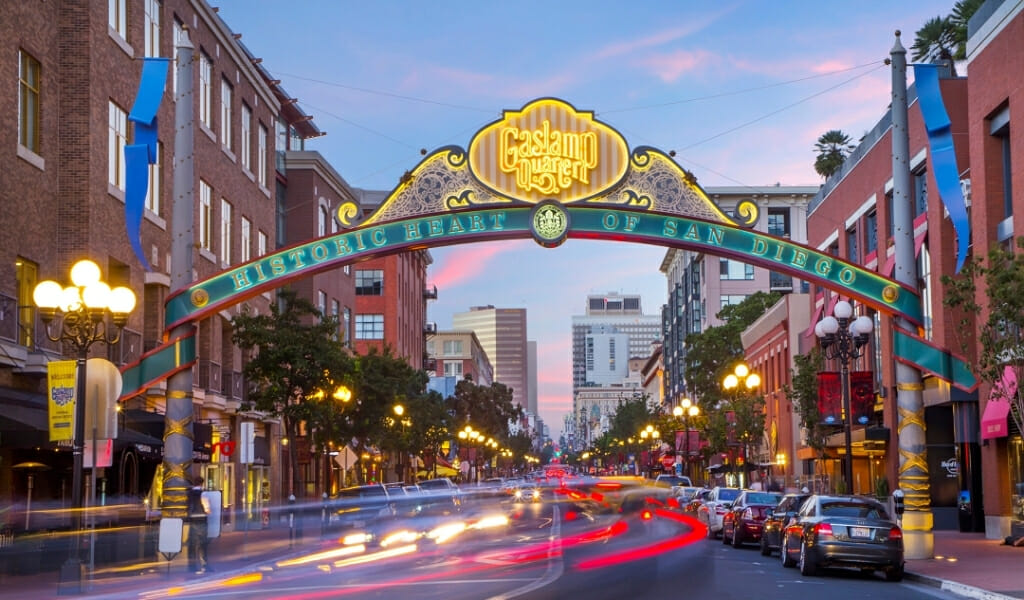
Where to go:
- The Gaslamp Museum at the Davis-Horton House
- Gaslamp Walking Historic True Crime Tour
- San Diego Ghost Tours
- Chinatown Museums (Historical and Art Gallery)
- Seaport Village and Embarcadero Paths
- Tivoli Bar (Wyatt Earp’s favorite bar)
The Early 20th Century
San Diego became a resort and business community in the first half of the 20th Century. The Spreckels and Marston interests, among many other merchants, drove downtown development. The city created its first municipal utilities; streetcars and the Coronado Ferry thrived; hotels and theatres sprouted everywhere; and recreational centers blossomed. As the city grew, neighborhoods developed with independent downtowns, giving San Diego its modern ‘City of Villages’ character.
Balboa Park
The development of Balboa Park represented the largest civic improvement during these years. To celebrate the opening of the Panama Canal in 1915, the city proposed the Panama-California Exposition. San Diego represented the first American port north of the Canal, and many hoped that it would become a massive shipping and naval center. Similar dreams based on failed railroad projects had previously evaporated.
The Exposition, designed to promote America’s Finest City to the world and the U.S. Navy, created the majority of the buildings now lining the Prado in Balboa Park. It also featured a small menagerie that, decades later, grew into the San Diego Zoo. A second exposition, held in 1935 and called the California Pacific International Exposition, expanded the park to the south and added numerous museums, gardens, and theater spaces.

San Diego Navy Town
It also impressed the Undersecretary of the U.S. Navy, a young Franklin D. Roosevelt, who later helped move the Navy Headquarters to the San Diego Bay. From this time on, San Diego became a Navy Town, a character it proudly maintains. Many sailors, following their enlistments, remembered the area’s beauty and returned to raise their families. The city also began importing retirees, promoting the climate as a wonderful place to enjoy sunset years.
San Diego became an important aircraft facility, too. Ryan Aircraft produced civilian and military planes from their site near the new downtown airport, and built the Spirit of St. Louis that carried Charles Lindbergh on his historic flight. Naval aviation achieved most of its firsts in the skies above the city, eventually leading to the creation of the Top Gun flight academy here.
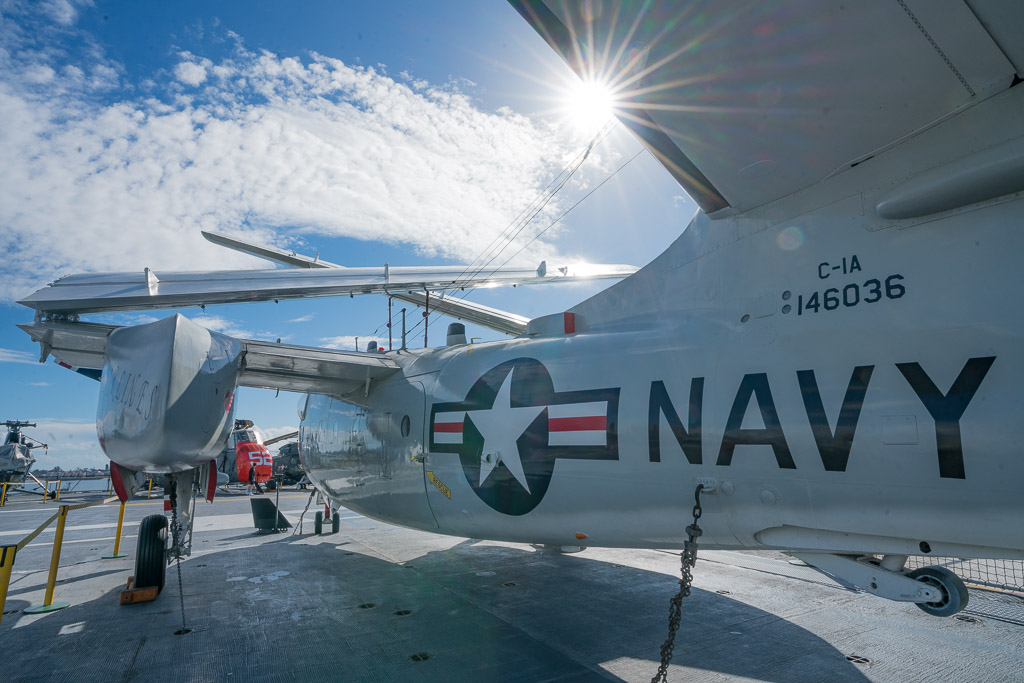
Where to go:
- Marston House
- Balboa Park gardens, museums, and theatres
- Coronado Ferry and Hotel Del Coronado
- San Diego Zoo
- Greenwood Memorial Park and Cemetery, Mt. Hope Cemetery
- USS Midway
Post-War Period
Following the wars, San Diego became even more of a military and industrial center. Naval and Marine bases grew throughout the county, as did their associated defense industries. The northern warehouse and industrial districts grew tremendously during this time, and the freeways arrived to link the far-flung communities of the county.
The airline and space industries became increasingly relevant to San Diego. The Convair plant near the airport produced military and civilian aircraft, and eventually developed the Atlas missiles that fueled NASA projects for years. Qualcomm grew into a major player of specialty electrons, and scientific breakthroughs streamed from the various universities in the area. The port facilities downtown likewise expanded with new tenants.
Professional sports also came to San Diego during this time. In 1969, the minor-league Padres, who arrived in 1935, became major-league, and the Chargers arrived, if only to leave some time after. Basketball thrived briefly at a new downtown arena before relocating to the larger one in the Midway District, which today hosts San Diego’s indoor soccer, arena football, box lacrosse, and minor-league hockey teams, as well as year-round concerts and events.
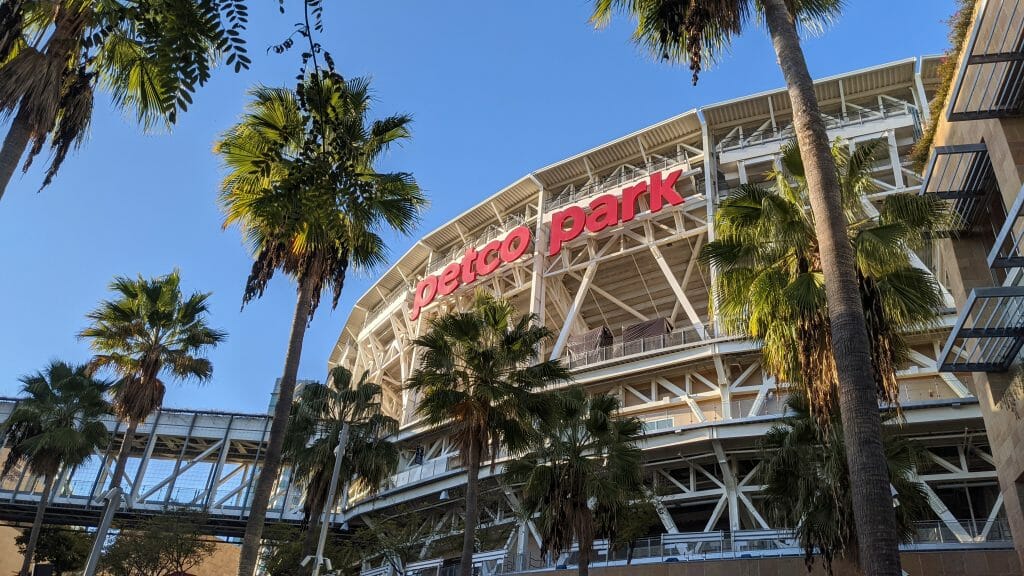
Where to go:
- U.S.S. Midway Museum and associated statues
- Liberty Station
- U.S.S. Recruit
- Maritime Museum
- Air and Space Museum
- San Diego Military Monuments & Memorials
- Petco Park
Modern Time and into the Future
The city continues to grow at one of the fastest rates in the country. The industrial focus has shifted to science and technology, thanks to numerous start-up incubators and world-class universities. The prestigious UCSD now hosts more Nobel Laureates than any other institution in the world. The area has become well-known for beer and wine production, and some of the best Mexican food in the country. Dining and shopping districts have developed in most neighborhoods, thanks to San Diego’s original small village expansion model.
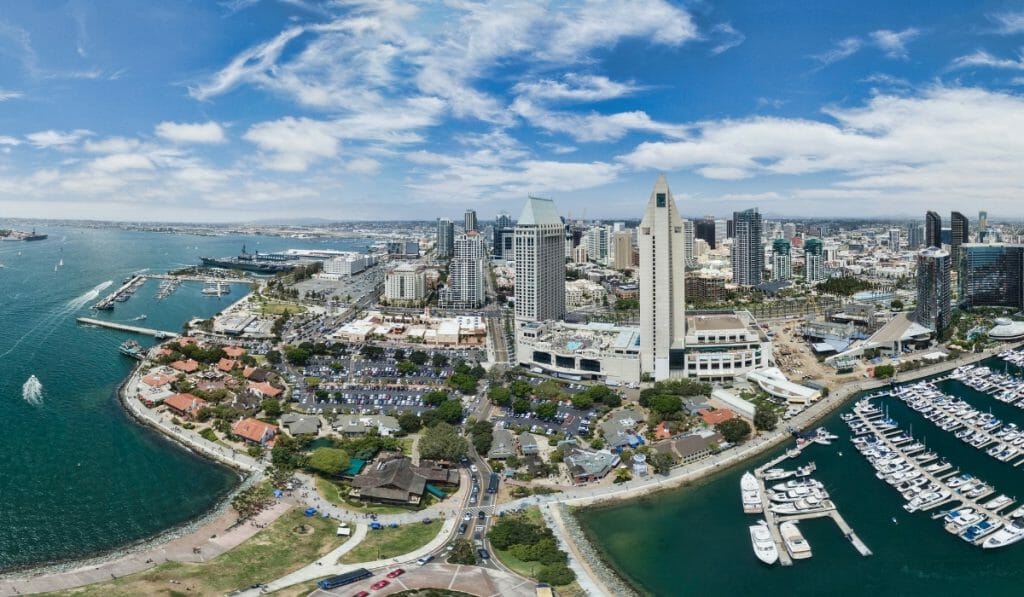
San Diego has also cleaned up its older neighborhoods. The Gaslamp Quarter and East Village downtown, North Park and University Heights uptown, have all been updated and beautified over the last couple decades to become great centers for living and night life. Several offer walking tours and pub crawls to experience their transformations more intimately.
In addition, with forty miles of beaches—and temperate conditions year-round—the opportunities for water recreation boggle the mind. The city has become a playground for visitors, with enough activities to fill a lifetime. This San Diego History guide barely scratches the surface of these opportunities. Take a look here of more fun things to do in San Diego.
Where to go:
- Bay Cruises, Mission Bay
- Beaches, beaches, and more beaches
- Petco Park
- San Diego Trolley Tours
- Central City Neighborhoods
I hope this short overview of San Diego History from the settlement of the Kumeyaay over 12000 years ago to modern times has give you a bit more insight of America’s finest city. San Diego History – Get To Know San Diego’s Backstory was written by Ben J. Byard for San Diego Explorer.
San Diego History – Get To Know San Diego’s Backstory: Pin for Later
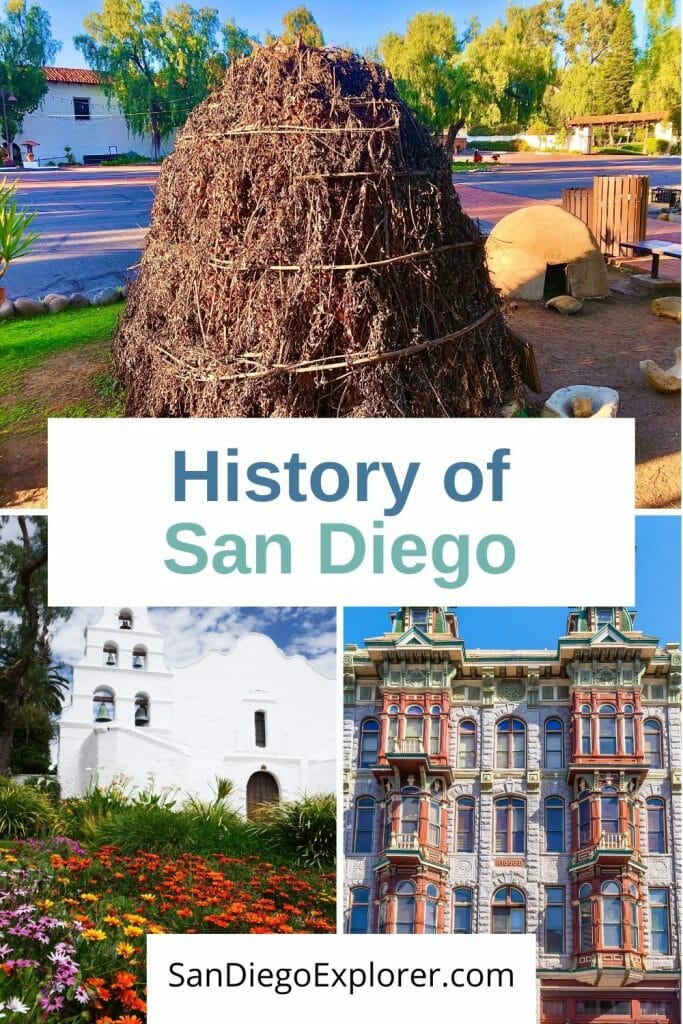
Last Updated on July 9, 2023 by Maria Haase
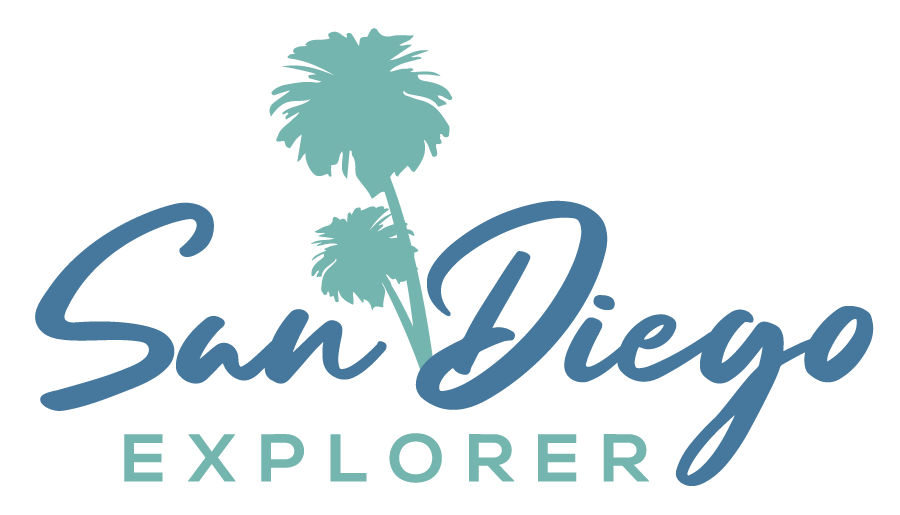

 Celebrate Cinco De Mayo In San Diego: Events, Parties & More
Celebrate Cinco De Mayo In San Diego: Events, Parties & More
Leave a Reply